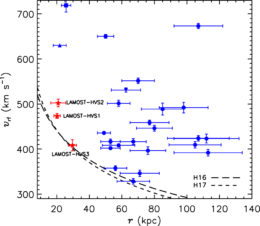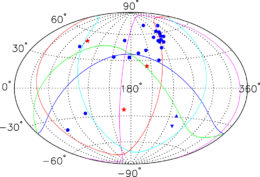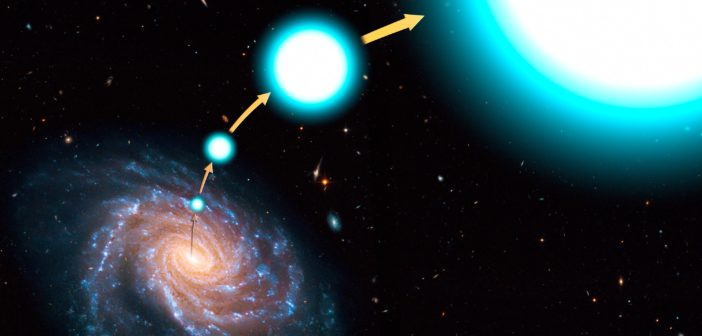Speeding stars running away from our galaxy pose an intriguing puzzle: where did these stars come from, and how were they accelerated to their great speeds? The recent discovery of two new runaway stars have increased the mystery.
Unexplained Speeders

The LAMOST telescope, located in Xinglong Station, China. [Sheliak]
One of the most commonly proposed scenarios is that these objects originated near the center of the Milky Way, and were flung out as a result of dynamical interactions with the central supermassive black hole. Other explanations exist, however — for instance, these stars could be the tidal debris of an accreted and disrupted dwarf galaxy, or they could be the surviving companion stars kicked out in Type Ia supernovae.
Besides wanting to better understand the origin of hypervelocity stars, scientists also care about these speedy objects because of the information they provide about the Milky Way. Measuring the three-dimensional motions of hypervelocity stars can give us a detailed look at the mass distribution of our galaxy — thereby revealing the shape of the Milky Way’s dark matter halo.

The radial velocities and locations of the three LAMOST-detected hypervelocity stars (red), compared to the other 24 known hypervelocity stars (blue). The dashed lines represent two models for the galactic escape velocity curve. [Huang et al. 2017]
Searching for More Hypervelocity Stars
For these reasons, scientists have conducted a number of systematic searches for hypervelocity stars to build up our sample size. Results from the most recent of these searches, conducted by examining the spectroscopic survey data of 6.5 million stars from the Large Sky Area Multi-Object Fibre Spectroscopic Telescope (LAMOST), have now been described in a publication led by Yang Huang (Yunnan University and Peking University).
Huang and collaborators narrowed the LAMOST data down to 126 high-mass hypervelocity star candidates. Using distance measurements, they determined the stars’ velocities in the galactic rest frame and eliminated all stars not moving faster than the galactic escape speed. This left three true hypervelocity stars: one that had been previously found in another study, and two that are new discoveries.
Conflicting Results

The spatial distribution of the confirmed hypervelocity stars, with the LAMOST detections shown in red and the other 24 known hypervelocity stars shown in blue. The great circles represent planes of young stellar structures near the galactic center. [Huang et al. 2017]
Huang and collaborators suggest that upcoming accurate proper motion measurements of these stars, expected in the next data release from the Gaia mission, will provide direct constraints on their origins. In the meantime, continued systematic searches for hypervelocity stars such as that presented here will ensure that we have a large sample of these speeding objects ready for Gaia’s analysis.
Citation
Y. Huang et al 2017 ApJL 847 L9. doi:10.3847/2041-8213/aa894b


2 Comments
Pingback: El enigma de tres estrellas hiperveloces. | Pablo Della Paolera
Pingback: More runaway stars